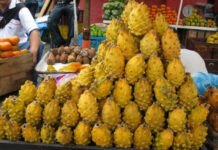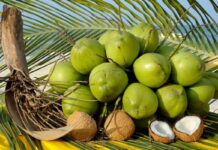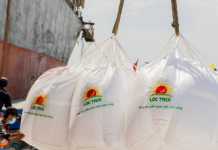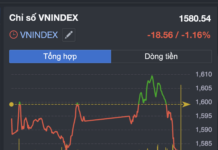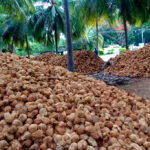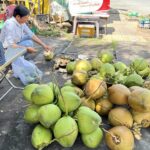According to data from the Vietnam Coconut Association, the country’s coconut cultivation area currently stands at approximately 202,000 hectares, with 181,000 hectares yielding a harvest of 2.28 million tons. The Mekong Delta region boasts the largest coconut cultivation area in Vietnam, spanning 178,000 hectares and producing 1.95 million tons.
In recent years, coconuts have emerged as a key agricultural export for Vietnam.
Statistics from Vietnam Customs reveal that fresh coconut exports rank among the top 6 fruits with the highest export value. In September, fresh coconut exports reached over $41 million, a 19% increase compared to the same period last year. Cumulatively, Vietnam earned over $138 million from fresh coconut exports in the first 9 months of the year, a 17% rise compared to the same period in 2024.
Beyond fresh coconuts, Vietnam also exports dried coconuts and over 100 coconut-derived products, including coconut oil, canned coconut water, and dried coconut meat, to numerous countries and territories. In the first 9 months of 2025, processed coconut products achieved an export value of nearly $260 million, a significant 55% increase year-over-year.
The United States has become Vietnam’s largest coconut export market, accounting for nearly 26% of total coconut export value. China follows as the second-largest market. Other markets, such as Spain, Puerto Rico, Australia, and Cambodia, have also significantly increased their imports of Vietnamese coconuts, with growth rates ranging from 2 to 3 times.
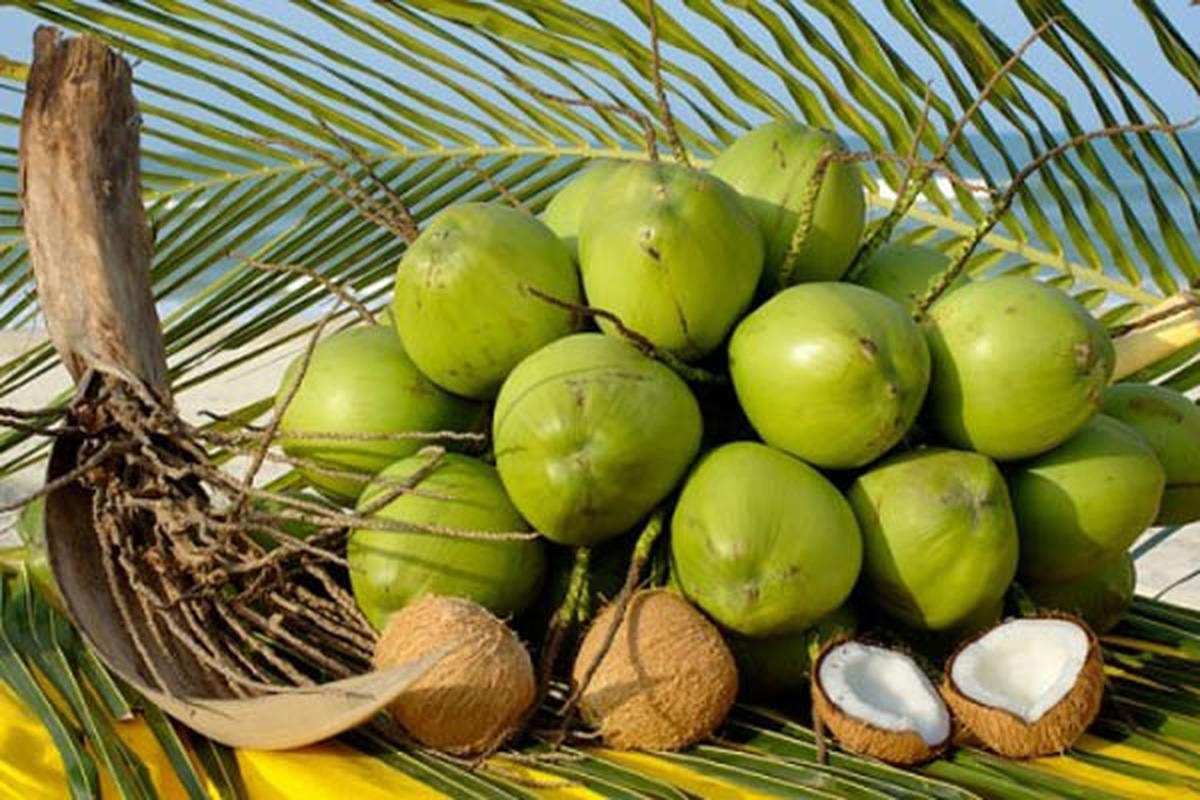
However, after a period of record-high prices, fresh coconuts in the domestic market are experiencing a sharp price decline. While in August, a dozen coconuts (12 fruits) were sold for 180,000 VND, traders are now purchasing them for only 40,000 VND per dozen.
This situation is prevalent across most coconut-growing provinces in the Mekong Delta. Coconut exporters confirm that they are currently paying only 40,000 – 50,000 VND per dozen coconuts. This price level is comparable to the lowest points in previous years.
A source reveals that after a period of smooth exports to China, buyers began to “reject” Vietnamese fresh coconuts due to inconsistencies in quality and uniformity, leading to returned shipments.
Mr. Cao Bá Đăng Khoa, Vice Chairman and Secretary-General of the Vietnam Coconut Association, explains that rapid export growth led to a situation where many companies purchased coconuts en masse without careful selection, resulting in containers exported to China containing coconuts of various sizes and flavors. Some shipments were returned, forcing companies to sell them at lower prices domestically.
In reality, according to the Plant Protection Department (Ministry of Agriculture and Environment), coconut quality remains inconsistent, with some products failing to meet export standards due to uneven cultivation and care techniques. Some regions still employ outdated irrigation methods, impacting both yield and quality.
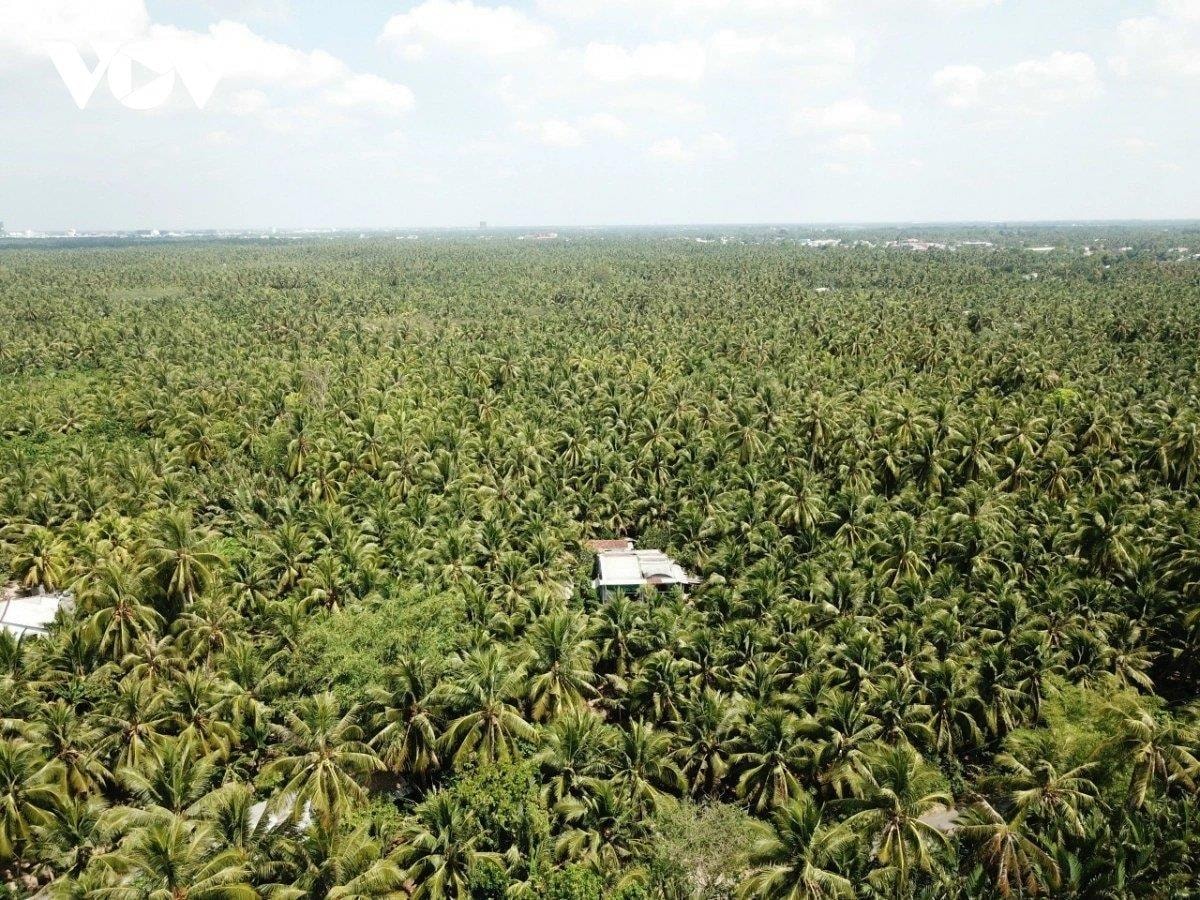
Coconut plantations in Ben Tre.
To ensure Vietnam’s coconut industry maintains its export growth and price stability, the Vietnam Coconut Association suggests restructuring the industry towards an eco-friendly, circular, and low-emission model. The industry must adapt by adopting sustainable farming practices, integrated pest management, and safe plant protection methods.
Additionally, establishing production-consumption linkages, developing concentrated raw material zones, and producing according to safety standards are essential strategies for Vietnam’s coconut industry to achieve its goal of becoming a billion-dollar export commodity.
Experts believe that Vietnam, currently the world’s 7th largest coconut producer, can regain its growth momentum and ascend the global supply chain by addressing two critical weaknesses: standardizing cultivation areas and ensuring product quality transparency.
The recent sharp decline in fresh coconut prices is not unique to Vietnam. A report from the Import-Export Department (Ministry of Industry and Trade) indicates a similar trend in Thailand.
Thailand, a major coconut producer in the region, saw fresh coconut prices in Songkhla province drop to just 1,300 – 2,100 VND per fruit by late October, below production costs. Inconsistent quality and limited market access are the primary reasons for this price drop.
Climate Change Threatens to Erase a Decade of Vietnam’s Economic Growth
The World Bank (WB) warns that without adequate adaptation measures, climate change could slash Vietnam’s GDP by at least 12.5% by 2050 compared to baseline projections. This would effectively erase nearly a decade of growth, significantly hindering the nation’s goal of achieving high-income status by 2045.
Soaring Prices of Vegetables in the Western Agricultural and Aquatic Region
Prolonged heavy rains and high tides have inundated vast vegetable-growing regions in the Western provinces, significantly reducing supply.



